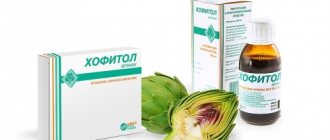We all need protection to one degree or another. External and internal. The body and mind are quite fragile and can be strengthened and supported in different ways. Even with medication.
If a person experiences negative effects (stress, shock, ischemia, intoxication, cerebrovascular accident, etc.), then the doctor may prescribe Mexidol.
Mexidol is a good helper in the fight against stress
Operating principle
The drug belongs to the group of heteroaromatic antioxidants and basically contains ethylmethylhydroxypyridine succinate, which in turn protects cell membrane lipids and reduces the level of free radicals in the body. This significantly expands the spectrum of pharmacological action. Mexidol has an antihypoxic (saturates the blood with oxygen), anti-stress, anticonvulsant effect. It also has nootropic properties, prevents and reduces memory impairment, increases concentration and performance, and reduces the manifestation of alcohol intoxication. Restores the sleep-wake cycle, improves the metabolism of brain tissue and their blood supply, improves microcirculation and rheological properties of blood (its fluidity), reduces the rate of dystrophic and morphological changes in the brain. It has a pronounced therapeutic effect in the treatment of Parkinson's disease. Mexidol improves the functional state of ischemic myocardium and the adaptive capabilities of the human body when exposed to various stress factors.
Mexidol also increases the content of dopamine, the so-called “hormone of joy”, in the brain.
Indications
In neurology, Mexidol is used in the following cases:
- acute cerebral circulatory disorders and discirculatory encephalopathy (otherwise – cerebral atherosclerosis);
- after transient ischemic attacks, in the subcompensation phase as preventive courses;
- vegetative-vascular dystonia;
- cognitive problems of atherosclerotic origin (impaired speech, memory, attention, intelligence and other symptoms associated with the development of atherosclerosis).
In psychiatry Mexidol is prescribed:
- to relieve withdrawal symptoms (otherwise known as withdrawal) due to alcohol and drug addiction;
- in case of intoxication with neuroleptics (drugs intended for the treatment of psychosis);
- to alleviate the impact of extreme (stress) factors;
- for anxiety disorders and neurotic and neurosis-like conditions.
Mexidol is also used for acute purulent-inflammatory processes of the peritoneum (necrotizing pancreatitis and peritonitis) as part of a complex of therapeutic treatments.
Indications for use
The drug is indicated for use in a number of cases:
- neurological pathologies;
- chronic cerebrovascular diseases;
- cerebrovascular accident;
- vegetative-vascular dystonia (mixed type);
- cardiac ischemia (as an additional remedy);
- brain hypoxia;
- problems with memory, attention, speech;
- constant stress;
- skull injuries;
- glaucoma;
- alcoholism;
- poisoning with neuroleptics;
- increased anxiety.
Side effects
One of the side effects after taking Mexidol may be nausea
Despite the body’s positive reaction to taking Mexidol and its low toxicity, the medicine still has side effects.
- from the cardiovascular system: increased blood pressure, decreased blood pressure;
- from the nervous system: drowsiness, difficulty falling asleep, anxiety, emotional reactivity, headache, loss of coordination;
- from the gastrointestinal tract: nausea, dry mouth;
- from the immune system: allergic reactions, including hyperemia, skin rash, itching;
- others: distal hyperhidrosis.
Where to buy Mexidol: price, reviews
The product can be bought in pharmacies at a price of 250 rubles for a package of 30 tablets or 450 rubles for 10 ampoules with a solution of 50 mg/ml. If you study customer reviews, you can see that the drug is very popular - the drug is recommended by more than 80% of patients.
Among the advantages are efficiency, reasonable price, and completely reliable information in the instructions. Many buyers write that their headaches, dizziness and other unpleasant sensations have gone away. In some cases, they talk about the lack of treatment results and the occurrence of side effects.
How to take Mexidol?
Mexidol in tablet form is taken orally. The tablet is not chewed or divided in half. You should drink it with plenty of water. Eating does not have any effect on the activity of the medication, so you can take Mexidol before, during or after meals.
The injection form is used for intramuscular injections or intravenous infusions (stream or drip). Before giving the injection, the drug is diluted in a 0.9% sodium chloride solution. It is injected slowly in a stream over 5 - 7 minutes, drip - at a rate of 40 - 60 drops per minute. The maximum daily dose for tablets is 800 mg, for injections - 1200 mg. Course therapy is canceled gradually, after achieving a stable clinical and laboratory effect.
Mexidol solution for intravenous administration
Please note that drowsiness may occur after taking Mexidol, so you should be careful while driving, as well as when engaging in other potentially dangerous activities.
| Disease | Course duration | Dosage* |
| Acute cerebrovascular accident (ACVA) | Initially within 10-14 days | 200-500 mg (i.v. drip) 2 to 4 times/day, then for another 14 days 200-250 mg (i.m.) several times/day |
| Encephalopathy | Initially within 2 weeks | See ONMK |
| Mild cognitive impairment | Course from 2 weeks to a month | 100-300 mg/day (i.m.) |
| Withdrawal syndrome | 5 to 7 days | 200-250 mg/day (iv drip or intramuscular injection) 2 - 3 times/day |
| Antipsychotic drug poisoning | Course in 7-14 days | From 200 to 500 mg/day (iv) |
| Acute edematous (interstitial) pancreatitis | 200-500 mg (iv drip and intramuscular injection) 3 times a day | |
| Necrotizing pancreatitis (mild) | 100-300 mg/day (iv drip and intramuscular injection 3 times/day | |
| Necrotizing pancreatitis (moderate) | 200 mg (iv) 3 times/day | |
| Necrotizing pancreatitis (severe) | In a pulse dosage of 800 mg on the first day, with a double dose regimen. Then 200 - 500 mg 2 times a day with a gradual reduction in the daily dose. | |
| Necrotizing pancreatitis (extremely severe) | From 800 mg/day to relieve shock. Next, 300 - 500 mg (iv drip) 2 times a day with a gradual reduction in the daily dosage. | |
| Open-angle glaucoma of various stages | Course 14 days | IM 100 - 300 mg/day, 1 - 3 times/day |
| Traumatic brain injury and consequences of traumatic brain injury | Within 10 -15 days | IV drip 200 - 500 mg 2 - 4 times / day |
*When taking pills. The method of administering the Mexidol injection in the same dosage is indicated in parentheses.
The duration of therapy for patients with coronary heart disease is at least 1.5-2 months. It is advisable to carry out repeated courses (on the recommendation of a doctor) in the spring and autumn.
In case of acute myocardial infarction, as part of complex therapy, it is administered intravenously (the first 5 days) and intramuscularly (the next 9 days) for 14 days against the background of traditional therapy for myocardial infarction, including nitrates, beta-blockers, angiotensin-converting enzyme (ACE) inhibitors, thrombolytics, anticoagulants and antiplatelet agents, as well as symptomatic agents according to indications.
Mexidol solution d/iv and intramuscular injection 5% ampoule 2ml No. 10
Compound
Active substance: ethylmethylhydroxypyridine succinate - 50 mg.
Excipients: sodium metabisulfite - 0.4 mg, water for injection - up to 1 ml.
Pharmacokinetics
Suction
The time to reach maximum concentration (Tmax) is 0.45-0.5 hours. Cmax when administering a dose of 400-500 mg is 3.5-4.0 mcg/ml.
Distribution
With intramuscular administration, it is determined in the blood plasma for 4 hours after administration. Mexidol quickly passes from the bloodstream into organs and tissues and is quickly eliminated from the body. The drug retention time (MRT) is 0.7-1.3 hours.
Removal
The drug is excreted mainly in the urine, mainly in glucurone-conjugated form and in small quantities unchanged.
Indications for use
- Acute cerebrovascular accidents;
- traumatic brain injury, consequences of traumatic brain injury;
- encephalopathy;
- autonomic dystonia syndrome;
- mild cognitive disorders of atherosclerotic origin;
- anxiety disorders in neurotic and neurosis-like conditions;
- acute myocardial infarction (from the first day) as part of complex therapy;
- primary open-angle glaucoma of various stages, as part of complex therapy;
- relief of withdrawal syndrome in alcoholism with a predominance of neurosis-like and vegetative-vascular disorders;
- acute intoxication with antipsychotic drugs;
- acute purulent-inflammatory processes of the abdominal cavity (acute necrotizing pancreatitis, peritonitis) as part of complex therapy.
Contraindications
- Acute liver dysfunction;
- acute renal dysfunction;
- increased individual sensitivity to the drug.
Strictly controlled clinical studies of the safety of the drug Mexidol® in children, pregnancy and breastfeeding have not been conducted.
Directions for use and doses
Mexidol® is administered intramuscularly or intravenously (stream or drip).
When administered by infusion, the drug should be diluted in 0.9% sodium chloride solution. Mexidol® is injected slowly over 5-7 minutes in a stream, and dropwise at a rate of 40-60 drops/min. The maximum daily dose should not exceed 1200 mg.
- In case of acute cerebrovascular accidents, Mexidol® is used in the first 10-14 days intravenously at a dose of 200-500 mg 2-4 times a day, then intramuscularly at a dose of 200-250 mg 2-3 times a day for 2 weeks. .
- For traumatic brain injury and the consequences of traumatic brain injury, Mexidol® is used for 10-15 days intravenously at a dose of 200-500 mg 2-4 times a day.
- For discirculatory encephalopathy in the decompensation phase, Mexidol® should be prescribed intravenously in a stream or drip at a dose of 200-500 mg 1-2 times a day for 14 days, then intramuscularly at 100-250 mg/day for the next 2 weeks .
- For course prevention of dyscirculatory encephalopathy, Mexidol® is administered intramuscularly at a dose of 200-250 mg 2 times a day for 10-14 days.
- For mild cognitive impairment in elderly patients and anxiety disorders, Mexidol® is administered intramuscularly at a daily dose of 100-300 mg for 14-30 days.
- In case of acute myocardial infarction, as part of complex therapy, Mexidol® is administered intravenously or intramuscularly for 14 days, against the background of traditional therapy for myocardial infarction, including nitrates, beta-blockers, ACE inhibitors, thrombolytics, anticoagulant and antiplatelet agents, as well as symptomatic means according to indications.
In the first 5 days, to achieve maximum effect, it is advisable to administer the drug intravenously; in the next 9 days, Mexidol® can be administered intramuscularly.
The drug is administered intravenously by drip infusion, slowly (to avoid side effects) in a 0.9% sodium chloride solution or a 5% dextrose (glucose) solution in a volume of 100-150 ml for 30-90 minutes. If necessary, a slow jet injection of the drug lasting at least 5 minutes is possible.
The drug is administered (IV or IM) 3 times a day every 8 hours. The daily therapeutic dose is 6-9 mg/kg body weight/day, a single dose is 2-3 mg/kg body weight. The maximum daily dose should not exceed 800 mg, single dose - 250 mg.
- For open-angle glaucoma of various stages, as part of complex therapy, Mexidol® is administered intramuscularly at 100-300 mg/day 1-3 times/day for 14 days.
- For alcohol withdrawal syndrome, Mexidol® is administered in a dose of 200-500 mg intravenously or intramuscularly 2-3 times a day for 5-7 days.
- In case of acute intoxication with antipsychotic drugs, Mexidol® is administered intravenously at a dose of 200-500 mg/day for 7-14 days.
- In acute purulent-inflammatory processes of the abdominal cavity (acute necrotizing pancreatitis, peritonitis), Mexidol® is prescribed on the first day both in the preoperative and postoperative periods. The administered doses depend on the form and severity of the disease, the prevalence of the process, and variants of the clinical course. Discontinuation of the drug should be done gradually, only after a stable positive clinical and laboratory effect.
- For acute edematous (interstitial) pancreatitis, Mexidol® is prescribed 200-500 mg 3 times a day intravenously (in 0.9% sodium chloride solution) and intramuscularly.
- Mild severity of necrotizing pancreatitis - 100-200 mg 3 times a day intravenously (in 0.9% sodium chloride solution) and intramuscularly.
- Moderate severity of necrotizing pancreatitis - 200 mg 3 times a day intravenously (in 0.9% sodium chloride solution).
- Severe necrotizing pancreatitis - in a pulse dosage of 800 mg on the first day, with a double dose regimen, then - 200-500 mg 2 times a day with a gradual decrease in the daily dose.
- An extremely severe course of necrotizing pancreatitis - an initial dose of 800 mg/day until the manifestations of pancreatogenic shock are persistently relieved, upon stabilization of the condition - 300-500 mg 2 times/day intravenously (in 0.9% sodium chloride solution) with a gradual reduction in the daily dosage.
Storage conditions
The drug should be stored out of the reach of children, protected from light at a temperature not exceeding 25°C.
Best before date
3 years. Do not use after the expiration date indicated on the package.
special instructions
In some cases, especially in predisposed patients with bronchial asthma with increased sensitivity to sulfites, severe hypersensitivity reactions may develop.
Description
Antioxidant agent.
Use in children
Strictly controlled clinical studies of the safety of Mexidol® in children have not been conducted.
Pharmacodynamics
It has antihypoxic, membrane protective, nootropic, anticonvulsant and anxiolytic effects, increases the body's resistance to stress. The drug increases the body's resistance to the effects of major damaging factors, to oxygen-dependent pathological conditions (shock, hypoxia and ischemia, cerebrovascular accidents, intoxication with alcohol and antipsychotic drugs /neuroleptics/).
Mexidol® improves cerebral metabolism and blood supply to the brain, improves microcirculation and rheological properties of blood, and reduces platelet aggregation. Stabilizes the membrane structures of blood cells (erythrocytes and platelets) during hemolysis. It has a hypolipidemic effect, reduces the level of total cholesterol and LDL.
Reduces enzymatic toxemia and endogenous intoxication in acute pancreatitis.
The mechanism of action of the drug Mexidol® is due to its antihypoxic, antioxidant and membrane protective effects. The drug inhibits the processes of lipid peroxidation, increases the activity of superoxide dismutase, increases the lipid-protein ratio, reduces the viscosity of the membrane, and increases its fluidity. Mexidol® modulates the activity of membrane-bound enzymes (calcium-independent phosphodiesterase, adenylate cyclase, acetylcholinesterase), receptor complexes (benzodiazepine, GABA, acetylcholine), which enhances their ability to bind to ligands, helps preserve the structural and functional organization of biomembranes, neurotransmitter transport and improve synaptic transmission. Mexidol® increases dopamine levels in the brain. Causes an increase in the compensatory activity of aerobic glycolysis and a decrease in the degree of inhibition of oxidative processes in the Krebs cycle under hypoxic conditions, with an increase in the content of ATP, creatine phosphate and activation of the energy-synthesizing functions of mitochondria, stabilization of cell membranes.
Mexidol® normalizes metabolic processes in the ischemic myocardium, reduces the necrosis zone, restores and improves the electrical activity and contractility of the myocardium, and also increases coronary blood flow in the ischemic zone, reduces the consequences of reperfusion syndrome in acute coronary insufficiency. Increases the antianginal activity of nitro drugs. Mexidol® promotes the preservation of retinal ganglion cells and optic nerve fibers during progressive neuropathy, the causes of which are chronic ischemia and hypoxia. Improves the functional activity of the retina and optic nerve, increasing visual acuity.
Side effects
To avoid side effects, it is recommended to adhere to the dosage regimen and rate of administration of the drug.
The frequency of side effects was determined according to the WHO classification: very often (≥10%); often (≥1%, but <10%); uncommon (≥0.1%, but <1%); rare (≥0.01%, but <0.1%); very rare (<0.01%); frequency unknown (frequency cannot be determined from available data).
From the immune system: very rarely - anaphylactic shock, angioedema, urticaria.
Mental disorders: very rarely - drowsiness.
From the nervous system: very rarely - headache, dizziness (may be associated with an excessively high rate of administration and is short-term).
From the cardiovascular system: very rarely - decreased blood pressure, increased blood pressure (may be associated with an excessively high rate of administration and is short-term).
From the respiratory system: very rarely - dry cough, sore throat, chest discomfort, difficulty breathing (may be associated with an excessively high rate of administration and is short-term).
From the digestive system: very rarely - dry mouth, nausea, unpleasant odor, metallic taste in the mouth.
From the skin and subcutaneous tissues: very rarely - itching, rash, hyperemia.
General disorders and reactions at the injection site: very rarely - a feeling of warmth.
Use during pregnancy and breastfeeding
The drug Mexidol® is contraindicated during pregnancy and lactation.
Interaction
Enhances the effect of benzodiazepine anxiolytics, anticonvulsants (carbamazepine), antiparkinsonian drugs (levodopa).
Reduces the toxic effects of ethyl alcohol.
Overdose
Symptoms: drowsiness, insomnia.
Treatment: due to low toxicity, overdose is unlikely. Treatment, as a rule, is not required; symptoms disappear on their own within 24 hours. In case of severe manifestations, supportive and symptomatic treatment is carried out.
Impact on the ability to drive vehicles and operate machinery
During the period of taking the drug, care should be taken when performing work that requires rapid psychophysical reactions (driving vehicles, machinery, etc.).
Mexidol during pregnancy and lactation
Often, medications for pregnant women and nursing mothers are prescribed with caution, and also in cases where the benefits to the mother outweigh the risks to the fetus and newborn. It’s the same story with Mexidol. There are no statistically reliable studies of the use of the drug in pregnant women, nursing mothers and children. That is, there are no clinical studies on which to rely, alas. Therefore, the drug is either prescribed as a last resort or is not recommended for use.
Mexidol is prescribed with caution during pregnancy
As for children, the use of Mexidol in pediatrics is indicated in the treatment of purulent neuroinfections, traumatic brain injuries, as well as for emergency care in case of childhood traumatic brain injuries (100 mg once).
Interaction with other drugs
Mexidol has proven itself to be a drug that is highly compatible with other medications, including those used to treat somatic diseases. But it is worth noting that Mexidol can enhance the effect of benzodiazepines, carbamazepine and drugs for the treatment of Parkinson's disease, analgesics, tranquilizers, neuroleptics and antidepressants, as well as substances with hypnotics and anticonvulsants. This allows you to reduce their doses and remove most side effects.
Mexidol reduces the toxicity of ethyl alcohol. This beneficial property is used in the treatment of alcohol withdrawal syndrome.
Mexidol and alcohol
As mentioned above, Mexidol is used as therapy for getting rid of alcohol addiction. The drug reduces the toxic effect of alcohol and removes it from the body. But this does not mean that you can drink alcohol while taking Mexidol. The active substance Mexidol, penetrating into the tissues of the liver and brain, only stops the signs of intoxication, but does not protect the cells themselves. That is, the effect of alcohol consumed by Mexidol is not neutralized and causes harm to the body.
Analogs
The pharmaceutical market offers not only Mexidol, but also its analogues. The drugs differ in the main substance (although the synonyms of Mexidol still contain the same ethylmethylhydroxypyridine succinate), auxiliary components, manufacturers, and the quality of purification of the raw materials used. That is why, after consulting a doctor, you can select medications in pharmacies that are similar in their therapeutic effect to Mexidol tablets, but are suitable for a specific clinical picture.
Replacement of the drug with an analogue must be agreed with the attending physician
Mexidol analogue tablets include:
- Medomexy;
- Mexiprim;
- Mexidant;
- Mexipridol;
- Mexicofin;
- Neurox;
- Cerecard.
Analogues of Mexidol injections
In terms of therapeutic effect, the following drugs are similar to the solution:
- Medomexy;
- Armadin;
- Mexico;
- Astrox;
- Mexipridol;
- Mexiprim.
The therapeutic effect can be achieved by other active substances. But not always analogues in effect can ideally replace the drug chosen by the doctor, so replacement is possible only after consultation.
Thus, the following medications are considered analogous in effect:
- Kaviton (active ingredient - vinpocetine) improves metabolism in brain cells, helps improve blood circulation;
- Nootropil (active ingredient - piracetam) stimulates brain activity;
- Glycine (active ingredient - glycine) improves processes in the brain;
- Cytoflavin (active ingredient - succinic acid) stimulates brain activity, improves thought processes, etc.
Mexidol or Actovegin?
Often those who take Mexidol are faced with a choice between it and Actovegin. What's better? The drugs have similar uses and are often prescribed together. Both act on the central nervous system, eliminate hypoxia, restore metabolism and affect the circulatory system. But Mexidol has broader pharmacological properties, and it is used in most cases. Allergic reactions to Actovegin are more common, but it can be taken by pregnant women. Also, unlike Mexidol, Actovegin is used for disorders in peripheral vessels, and to treat the consequences of such disorders - trophic ulcers and angiopathy. As a result, the decision to prefer one of the drugs or take them together falls on the shoulders of the doctor.
Analogues of "Mexidol"
Mexidol analogues include a number of prescription and over-the-counter drugs:
- "Glycine":
- "Cerekard";
- "Neurox";
- "Combiplen";
- "Caviton";
- "Hypoxen";
- "Armandine";
- "Tenoten";
- Astrox;
- "Tryptophan";
- Rilutek and many others.
The most popular analogues of Mexidol tablets are:
- "Armadin" - also available in the form of solution and tablets. They are more expensive - for example, tablets can be purchased for at least 300 rubles, ampoules for injections - from 500 rubles. The medicine is taken to improve memory, especially in older patients. The product also helps improve performance and does not cause drowsiness.
- “Glitsed” is a sedative drug that can be purchased at a price of 900 rubles. Improves blood supply to the brain, helps with recovery from traumatic brain injuries, and is used to treat a number of diseases of the nervous system.
- “Antifront” is a blood pressure stabilizer that helps cope with headaches and dizziness. The price starts from 1500 rubles.
- "Actovegin" is often prescribed in parallel with "Mexidol" because it has the same properties.





